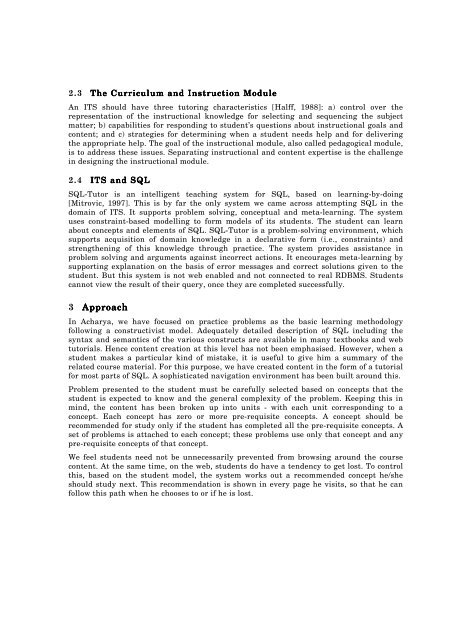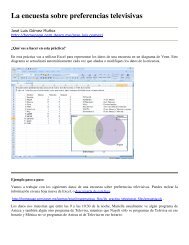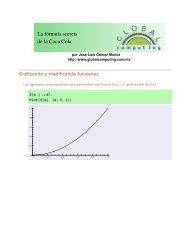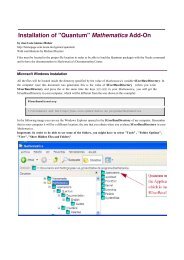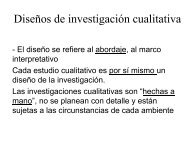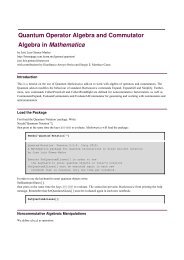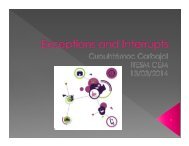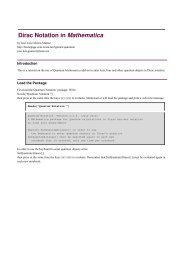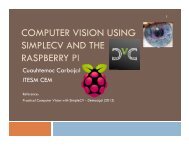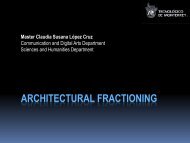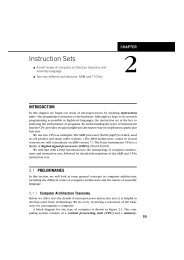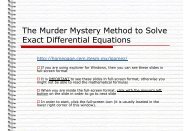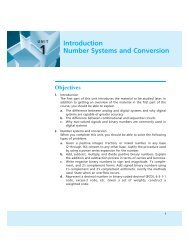Acharya: An Intelligent Tutoring Environment for ... - C-DAC Mumbai
Acharya: An Intelligent Tutoring Environment for ... - C-DAC Mumbai
Acharya: An Intelligent Tutoring Environment for ... - C-DAC Mumbai
Create successful ePaper yourself
Turn your PDF publications into a flip-book with our unique Google optimized e-Paper software.
2.3 The Curriculum and Instruction Module<strong>An</strong> ITS should have three tutoring characteristics [Halff, 1988]: a) control over therepresentation of the instructional knowledge <strong>for</strong> selecting and sequencing the subjectmatter; b) capabilities <strong>for</strong> responding to student’s questions about instructional goals andcontent; and c) strategies <strong>for</strong> determining when a student needs help and <strong>for</strong> deliveringthe appropriate help. The goal of the instructional module, also called pedagogical module,is to address these issues. Separating instructional and content expertise is the challengein designing the instructional module.2.4 ITS and SQLSQL-Tutor is an intelligent teaching system <strong>for</strong> SQL, based on learning-by-doing[Mitrovic, 1997]. This is by far the only system we came across attempting SQL in thedomain of ITS. It supports problem solving, conceptual and meta-learning. The systemuses constraint-based modelling to <strong>for</strong>m models of its students. The student can learnabout concepts and elements of SQL. SQL-Tutor is a problem-solving environment, whichsupports acquisition of domain knowledge in a declarative <strong>for</strong>m (i.e., constraints) andstrengthening of this knowledge through practice. The system provides assistance inproblem solving and arguments against incorrect actions. It encourages meta-learning bysupporting explanation on the basis of error messages and correct solutions given to thestudent. But this system is not web enabled and not connected to real RDBMS. Studentscannot view the result of their query, once they are completed successfully.3 ApproachIn <strong>Acharya</strong>, we have focused on practice problems as the basic learning methodologyfollowing a constructivist model. Adequately detailed description of SQL including thesyntax and semantics of the various constructs are available in many textbooks and webtutorials. Hence content creation at this level has not been emphasised. However, when astudent makes a particular kind of mistake, it is useful to give him a summary of therelated course material. For this purpose, we have created content in the <strong>for</strong>m of a tutorial<strong>for</strong> most parts of SQL. A sophisticated navigation environment has been built around this.Problem presented to the student must be carefully selected based on concepts that thestudent is expected to know and the general complexity of the problem. Keeping this inmind, the content has been broken up into units - with each unit corresponding to aconcept. Each concept has zero or more pre-requisite concepts. A concept should berecommended <strong>for</strong> study only if the student has completed all the pre-requisite concepts. Aset of problems is attached to each concept; these problems use only that concept and anypre-requisite concepts of that concept.We feel students need not be unnecessarily prevented from browsing around the coursecontent. At the same time, on the web, students do have a tendency to get lost. To controlthis, based on the student model, the system works out a recommended concept he/sheshould study next. This recommendation is shown in every page he visits, so that he canfollow this path when he chooses to or if he is lost.


